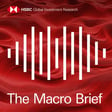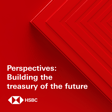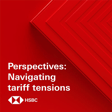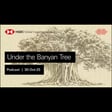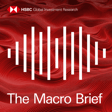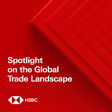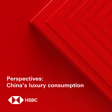Become a Creator today!Start creating today - Share your story with the world!
Start for free
00:00:00
00:00:01

Under the Banyan Tree - How Asia got its flows back
Herald van der Linde sits down with Head of Asia FX Research Joey Chew and Equity Strategist Prerna Garg to discuss what's bringing money back to the region's stock and currency markets in 2023.
Disclaimer: https://www.research.hsbc.com/R/51/J6zMFBd. Stay connected and access free to view reports and videos from HSBC Global Research follow us on LinkedIn https://www.linkedin.com/feed/hashtag/hsbcresearch/ or click here: https://www.gbm.hsbc.com/insights/global-research.
Hosted on Acast. See acast.com/privacy for more information.
Transcript
Introduction and Podcast Availability
00:00:00
Speaker
Welcome to HSBC Global Viewpoint, the podcast series that brings together business leaders and industry experts to explore the latest global insights, trends, and opportunities.
00:00:11
Speaker
Make sure you're subscribed to stay up to date with new episodes.
00:00:14
Speaker
Thanks for listening.
00:00:15
Speaker
And now onto today's show.
00:00:16
Speaker
This is a podcast from HSBC Global Research, available on Apple Podcasts and Spotify.
00:00:22
Speaker
Search for HSBC Global Viewpoint or join us via the HSBC Global Banking and Markets page on LinkedIn.
00:00:29
Speaker
However you're listening, analyst notifications, disclosures and disclaimers must be viewed on the link attached to your media player.
Focus on Asia's Market Changes for 2023
00:00:45
Speaker
Welcome to Under the Banyan Tree, where we put Asian markets and economics in context.
00:00:50
Speaker
I'm Harold van der Linde, head of Asian equity strategy at HSBC in Hong Kong, and today's podcast is all about fund flows.
00:00:59
Speaker
Last year, it was a tricky one for Asia, but for now, the feel-good factor is back for 2023.
00:01:05
Speaker
We're going to look both at the foreign exchange and equity markets, both of them are big flow markets, to see how trading has changed, what's driving the money back into the region, and also how long it can stay here.
00:01:18
Speaker
With me today are Head of Asian Foreign Exchange Research, Joey Chu, and my fellow equity strategist, Perna Gark.
00:01:26
Speaker
Join us for the next 15 minutes, Under the Banyan Tree.
Impact of Global Events on Asian Markets
00:01:34
Speaker
Well, welcome Joey and Prerna to the podcast.
00:01:38
Speaker
Last year we've seen significant outflows of the Asian region, right?
00:01:42
Speaker
Twelve months ago we were talking about supply chain issues that people couldn't get their products around the world.
00:01:48
Speaker
Covid was still a big thing in China.
00:01:50
Speaker
People worried about growth.
00:01:51
Speaker
The central bank in the US was actually trying to take money out of markets.
00:01:56
Speaker
All of that wasn't really good news for Asia.
00:01:57
Speaker
But this time around the whole picture is quite different.
00:02:02
Speaker
Central banks seem to be very close to a peak in raising interest rates, meaning they're not going to take that much more money out of markets, if you want to put it like that.
00:02:10
Speaker
Interest rates might stay kind of high for some time, but there is now an anticipation that they will have to come down.
00:02:17
Speaker
China is reopening.
00:02:18
Speaker
So the story has really changed to a large extent.
00:02:22
Speaker
That optimism, do we see that in the currency markets as well, Joey?
Currency Performance and China's Economic Influence
00:02:26
Speaker
Yeah, definitely we do.
00:02:27
Speaker
So we're seeing across the board a recovery in all currencies against the dollar.
00:02:32
Speaker
So the dollar had a really good run, you know, between the middle of 2021 up until October 2022.
00:02:38
Speaker
And then thereafter, I think there's been this reassessment that maybe the peak Fed funds rate is near.
00:02:44
Speaker
And so the dollar has suffered a demise.
00:02:46
Speaker
And we realized that dollar Asia, so Asian currencies against the dollar, has actually depreciated even more than other currencies against the dollar.
00:02:55
Speaker
And that is really because of the China reopening theme as well.
00:02:58
Speaker
So if you say dollar Asia, you mean the Asian currencies have appreciated more versus the dollar than, for example, Latin America or European currency or anything like that?
00:03:06
Speaker
Yes, that is what we have noticed over the last two to three months, not just Latin, but also, you know, like the G10 currencies, for example.
00:03:13
Speaker
So Asian currencies have additional momentum aside from just the broad dollar, aside from the Fed.
00:03:18
Speaker
Yeah, so that optimism is here.
00:03:20
Speaker
So let's unpack that a little bit.
00:03:22
Speaker
Within Asia, have you seen still that some currencies have done very well and other ones much less so?
00:03:27
Speaker
Yeah, so within Asia, as mentioned, because additional momentum is driven by China reopening and recovery theme,
00:03:33
Speaker
So naturally, a lot of the currencies that are more correlated to China has done better.
00:03:37
Speaker
So for example, Korean won, Taibag because of the tourism angle, ringgit, singh dollar, Taiwan dollar, this has outperformed, say, the INR and the IDR.
00:03:48
Speaker
INR is the Indian rupee and the IDR is the Indonesian rupee, right?
00:03:51
Speaker
That is correct.
00:03:52
Speaker
Okay, so we've seen some divergence.
00:03:54
Speaker
Now, one currency that people always look at but you haven't mentioned yet is the Japanese yen.
00:03:58
Speaker
There are some particular dynamics going on in that market, correct?
00:04:02
Speaker
Yeah, that is right.
00:04:03
Speaker
So the Japanese yen is slightly different from the rest of Asia in that it does not really benefit directly from the China reopening theme.
00:04:10
Speaker
However, there's been a lot of speculation about the Bank of Japan's policy changes.
00:04:15
Speaker
So the Bank of Japan did want...
00:04:17
Speaker
policy change in December to basically allow bond yields to rise a little bit more than they were able to in the past.
00:04:24
Speaker
And I think some people are thinking there could be another of such similar change this year.
00:04:29
Speaker
So that has driven, you know, dollar-yen a little bit lower as well.
00:04:33
Speaker
Okay, dollar-yen lower, meaning the yen is getting a little bit stronger versus the US dollar.
00:04:37
Speaker
That's right.
Identifying Key Risks in 2023
00:04:40
Speaker
I suspect that if the story is that interest rates in the US are going to continue to decline, or the market expectation is that we're close to a peak and it's going to decline, that story might well continue, that the currency strength could be here for longer.
00:04:53
Speaker
But there's always something in the markets that happens that fears us off from a particular course.
00:04:57
Speaker
What are the risks to this particular scenario?
00:05:00
Speaker
Yeah, so I think we see three risks.
00:05:03
Speaker
The first risk is exactly about this rates, lower rates view.
00:05:08
Speaker
So it could be possible that markets might have gone a little bit too far ahead of itself over the last three months in trying to price in the peak rates, trying to price in rates, rates.
00:05:18
Speaker
cuts later this year because the US economy is still holding up quite well.
00:05:24
Speaker
So it might be that rates stay higher for longer, at least for the next few months, rather than immediately rates going down.
00:05:32
Speaker
So that could be some near-term risk.
00:05:34
Speaker
If the market realized that, it would probably mean that the dollar is more attractive and then the currencies were weak against them.
00:05:39
Speaker
I think it would just mean like a temporary consolidation or a temporary rebound in the dollar against some of the other currencies, right?
00:05:47
Speaker
Before another leg lower when market is more certain that rates are going down.
00:05:52
Speaker
It could be like a near-term reassessment.
00:05:55
Speaker
So that's the first risk.
00:05:56
Speaker
The second risk is that markets might have overlooked some China-related risk.
00:06:01
Speaker
So it's true that reopening is happening, recovery is happening, but the magnitude of that is still subject to debate.
00:06:08
Speaker
We need to see more policy stimulus and impetus that could come after March when there's some important political meetings happening.
00:06:17
Speaker
And the third risk is related to equity flows.
00:06:20
Speaker
So equity flows were driving a lot of the currency strength, especially those related to RMB like Korean won, Taiwan dollar in January.
00:06:28
Speaker
But, you know, recently we've seen some sort of slowdown in equity inflows into China.
00:06:33
Speaker
So it suggests that some of this reallocation, rebalancing might have already run its course.
00:06:39
Speaker
So I think that's the third risk that we are watching out for.
00:06:43
Speaker
So speaking of that, you know, what is your take on the equity flow situation?
00:06:47
Speaker
Yeah, that's right.
00:06:47
Speaker
I mean, that's my turf.
00:06:49
Speaker
We look at that in quite some detail.
00:06:52
Speaker
What we've seen is that most funds, equity funds that invest in Asian stocks, were significantly underweight China last year.
00:07:02
Speaker
And when then the reopening happened was a bit of a surprise reset.
00:07:06
Speaker
So a lot of funds have been trying to catch up with the market.
00:07:10
Speaker
And we know that in December and until say early January that they've been really trying to catch up, but they were not really where they wanted to be.
00:07:18
Speaker
But if you extrapolate that a little bit, and we're now a good month later at least, it looks like particularly Asian-centric funds, funds that have to invest in Asia, are probably close to a neutral position.
00:07:31
Speaker
Maybe some of them have gone overweight.
00:07:33
Speaker
So they're getting into a comfort zone.
00:07:35
Speaker
So the additional flow from those funds would be a little bit more limited, while the global funds are still quite underweight.
00:07:41
Speaker
So I still think there is more money to be reallocated, but they will be a bit more slow.
00:07:45
Speaker
Global funds are funds that don't have to invest in Asia.
00:07:48
Speaker
They can invest anywhere on the planet, but they can opt to do so.
00:07:52
Speaker
So I still think money will come into the region, but the pace of that will slow.
00:07:57
Speaker
And a little bit of what you mentioned as well, that we've seen that because money went to China, it had to be taken somewhere else from.
00:08:04
Speaker
So we've seen outflows or we've seen at least reallocations in portfolios with regards to Brazil, for example.
00:08:11
Speaker
Money has been taken out of India and has gone into China as well.
00:08:15
Speaker
So, yeah, broadly speaking, massive flows.
00:08:18
Speaker
In January alone, we have $25 billion coming into Asian equities.
00:08:22
Speaker
But a lot of that was just purely to rebalance China.
00:08:27
Speaker
Now, that is institutional flows.
Rise of Retail Investors in Asia
00:08:30
Speaker
Those are flows that professional portfolio managers do.
00:08:34
Speaker
But the big player actually in Asian markets, in particular over the last couple of years, has been the retail investor.
00:08:40
Speaker
And my colleague Perna Gag has looked at that in quite some details.
00:08:44
Speaker
So let's take a break here and then we get back to have a chat with Perna now.
00:08:57
Speaker
So now we're going to look at retail flows in stock markets across Asia.
00:09:01
Speaker
Over the last couple of years, retail investors have become really big investors in these markets.
00:09:06
Speaker
And for that purpose, we have here Pranagag from the strategy team.
00:09:10
Speaker
Thank you for coming on to the podcast, Pranag.
00:09:11
Speaker
Thanks for having me, Harald.
00:09:13
Speaker
Before we're going to talk about numbers and trends, what is a retail investor?
00:09:18
Speaker
So retail investors are these mom and pop investors.
00:09:21
Speaker
They are not the professional licensed investors and they generally invest in small amount into stock markets.
00:09:28
Speaker
Yeah, they don't invest a lot, but they've really become as a group, a very big investor.
00:09:32
Speaker
Is that correct?
00:09:33
Speaker
That's correct.
00:09:34
Speaker
They have grown multifold in last couple of years.
00:09:36
Speaker
They've become a prominent investor in Asian markets.
00:09:40
Speaker
If I have to put some perspective using numbers around it,
00:09:43
Speaker
in markets like Korea and Taiwan, they accounted for more than 70% of the total activity in stock markets in 2021.
00:09:50
Speaker
So you can see they were bigger than the institutional investors like mutual funds or foreign investors combined.
00:09:58
Speaker
So yeah, they have become pretty big in Asian markets.
00:10:01
Speaker
How much do they own?
00:10:02
Speaker
Because we look at, you say how much they trade, right?
00:10:06
Speaker
But you can buy and then you can sell something, you can trade a lot.
00:10:08
Speaker
How much do they own of Asian stock markets?
00:10:12
Speaker
So typically, the domestic investors in Asia, they account for around two-thirds of the total market share in Asian markets right now.
00:10:19
Speaker
This really wasn't the case a couple of years back when they were much smaller.
00:10:22
Speaker
So I have a question here.
00:10:25
Speaker
Where do you think these investors get their money from?
00:10:28
Speaker
Well, that's a good one.
00:10:30
Speaker
Basically, across Asia, people are getting older and we don't really have the social security schemes like pension schemes and education funds that you have in many developed markets.
00:10:43
Speaker
So people have to save for health care, for their retirement, for children's education themselves.
00:10:49
Speaker
So they put a lot of money aside in order to do so.
00:10:53
Speaker
So that's where the health comes from.
00:10:54
Speaker
And as societies get older, older people just have been able to accumulate that wealth as well.
00:11:00
Speaker
So that helps as well to a certain extent.
00:11:03
Speaker
So that's where this comes from.
00:11:04
Speaker
It's always a demographic trend.
00:11:06
Speaker
That also means that it will probably continue for some time.
00:11:10
Speaker
In which markets in Asia are retail investors the biggest and in which ones are they still quite small?
00:11:16
Speaker
So we have to divide it into two baskets.
00:11:19
Speaker
In markets like Korea and Taiwan and maybe in India, these retail investors are really big already.
00:11:25
Speaker
But in ASEAN markets, say Indonesia or Thailand or Philippines, they are picking up.
00:11:30
Speaker
They are still small, but they're growing at a really high pace now.
00:11:33
Speaker
And what is the situation in China, actually?
00:11:35
Speaker
That's a bit unique, right?
00:11:36
Speaker
Yeah.
00:11:36
Speaker
So China markets are a bit different.
00:11:39
Speaker
And here I'm talking about the mainland China markets.
00:11:41
Speaker
mainland China was already known to be a big retail market.
00:11:45
Speaker
Like, you know, more than 90% of the volumes used to come from retail investors at a point of time.
00:11:50
Speaker
But here we see that now mutual funds are getting bigger and households.
00:11:55
Speaker
Now, instead of investing directly, these households invest in mutual fund industry.
00:12:00
Speaker
And this industry is growing at more than 15-20% per annum in China.
00:12:04
Speaker
Yeah, and I guess what you also have in China is that people used to buy property, but given the difficulties in the property sectors, they're now more inclined to buy funds, as you say.
00:12:12
Speaker
That could be called one of the big catalysts for China markets.
00:12:15
Speaker
Yeah, that's right.
00:12:17
Speaker
So what are these retail investors doing in markets now these days?
00:12:21
Speaker
So 2022 was a weak and volatile year.
00:12:24
Speaker
And we've seen these retail investors cut back a bit on their activity.
00:12:28
Speaker
From the surface, this gives an impression that maybe these investors are exiting.
00:12:32
Speaker
But that's not really the case.
00:12:34
Speaker
Like, you know, in India, there's something called SIPs that is picking up.
00:12:37
Speaker
SIPs are the systematic investment plans.
00:12:41
Speaker
So these are the saving plans where investors on a monthly or quarterly basis, they invest their money instead of putting one big lump sum amount.
00:12:49
Speaker
Right.
00:12:50
Speaker
Monthly investment plans, basically.
00:12:51
Speaker
So we see that these SIPs are becoming a big source of getting into stock markets.
00:12:57
Speaker
So like, you know, in last one year, the purchases via these SIPs were so big that it could offset the big outflows that we had seen from foreign investors.
00:13:07
Speaker
In Taiwan and Korea, retail investors are increasingly investing via ETFs, the exchange traded products.
00:13:16
Speaker
In mainland China, as we discussed, the purchases via mutual funds are,
00:13:19
Speaker
picking up.
00:13:21
Speaker
So what we really see is like, you know, unlike in 2020 or 2021, where these retail investors were directly investing into Asian markets, now they are investing indirectly via funds or ETFs.
00:13:33
Speaker
So to summarize this, what you tell me, Prona, is that the retail investors are actually the biggest investors in Asia.
00:13:40
Speaker
They are still investing, but they're not doing it in the same way.
00:13:43
Speaker
They are doing it more through giving it to professional managers, you could say.
00:13:47
Speaker
While at the same time, we see that institutional fund managers globally are allocating money to Asia as well, to a large extent that is driven by optimism on China, of course, what happens with US interest rates.
00:14:00
Speaker
But the
00:14:01
Speaker
pace of these purchases seems to be starting to slow from here on.
00:14:05
Speaker
And that's something that we just need to keep in mind.
00:14:08
Speaker
That's right.
00:14:09
Speaker
That's how we see in Asian markets right now.
Future Expectations and Investment Opportunities
00:14:20
Speaker
So let's just tie these two conversations together.
00:14:24
Speaker
What we see globally is a reassessment of where people want to invest their money.
00:14:29
Speaker
And that is to a large extent driven by the expectations that maybe the US interest rates are peaking and might eventually come down.
00:14:37
Speaker
While at the same time, the growth environment in China and the rest of Asia looks really strong.
00:14:42
Speaker
And that means that if you invest in Asian assets, yeah, those currencies will appreciate
00:14:48
Speaker
as well.
00:14:49
Speaker
So that is a positive.
00:14:51
Speaker
We've seen a lot of that already taking place.
00:14:53
Speaker
This is likely to continue, but as Joey highlighted, there are some risks to that.
00:14:57
Speaker
But we should not ignore, actually, the largest investor in Asia, which over the last few years has become the retail investor.
Closing and Preview of Next Episode
00:15:04
Speaker
And although it looks like they're not around anymore, they are actually investing now through funds and ETFs increasingly as well, and their monthly contributions to some
00:15:15
Speaker
savings plan they have seem to be in aggregate so big that that drives market as well.
00:15:22
Speaker
And that brings us to the end of this week's podcast.
00:15:25
Speaker
Many thanks to Joey and Perna for their insights.
00:15:27
Speaker
And thank you, as always, for listening.
00:15:30
Speaker
I'll be back next week with my partner in podcasting, Fred Newman.
00:15:33
Speaker
Take care and all the best until then.
00:15:44
Speaker
Thank you for joining us at HSBC Global Viewpoint.
00:15:47
Speaker
We hope you enjoyed the discussion.
00:15:49
Speaker
Make sure you're subscribed to stay up to date with new episodes.
